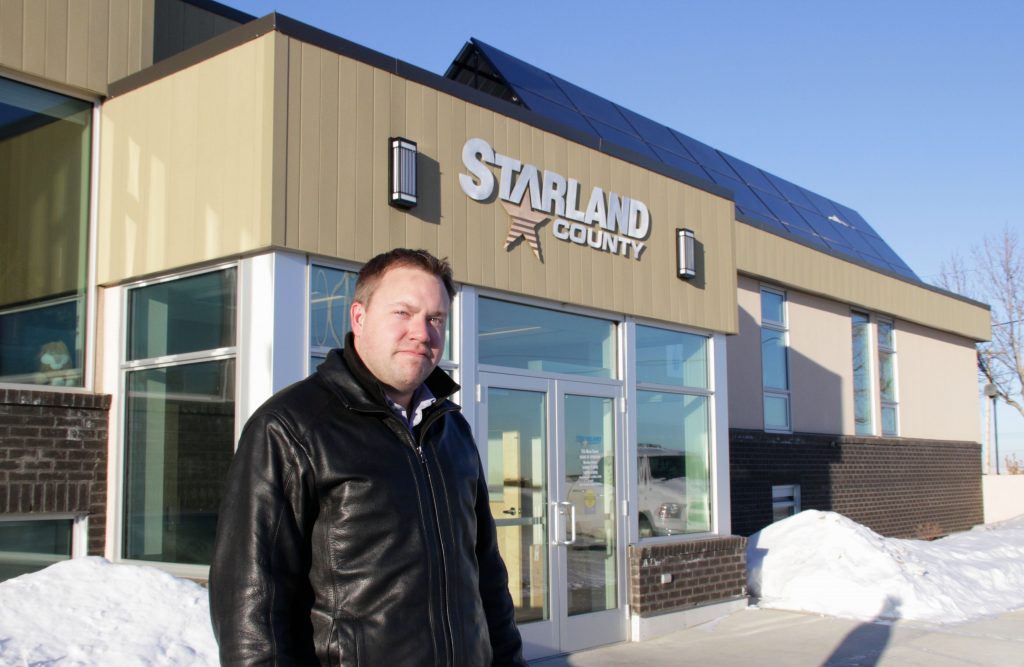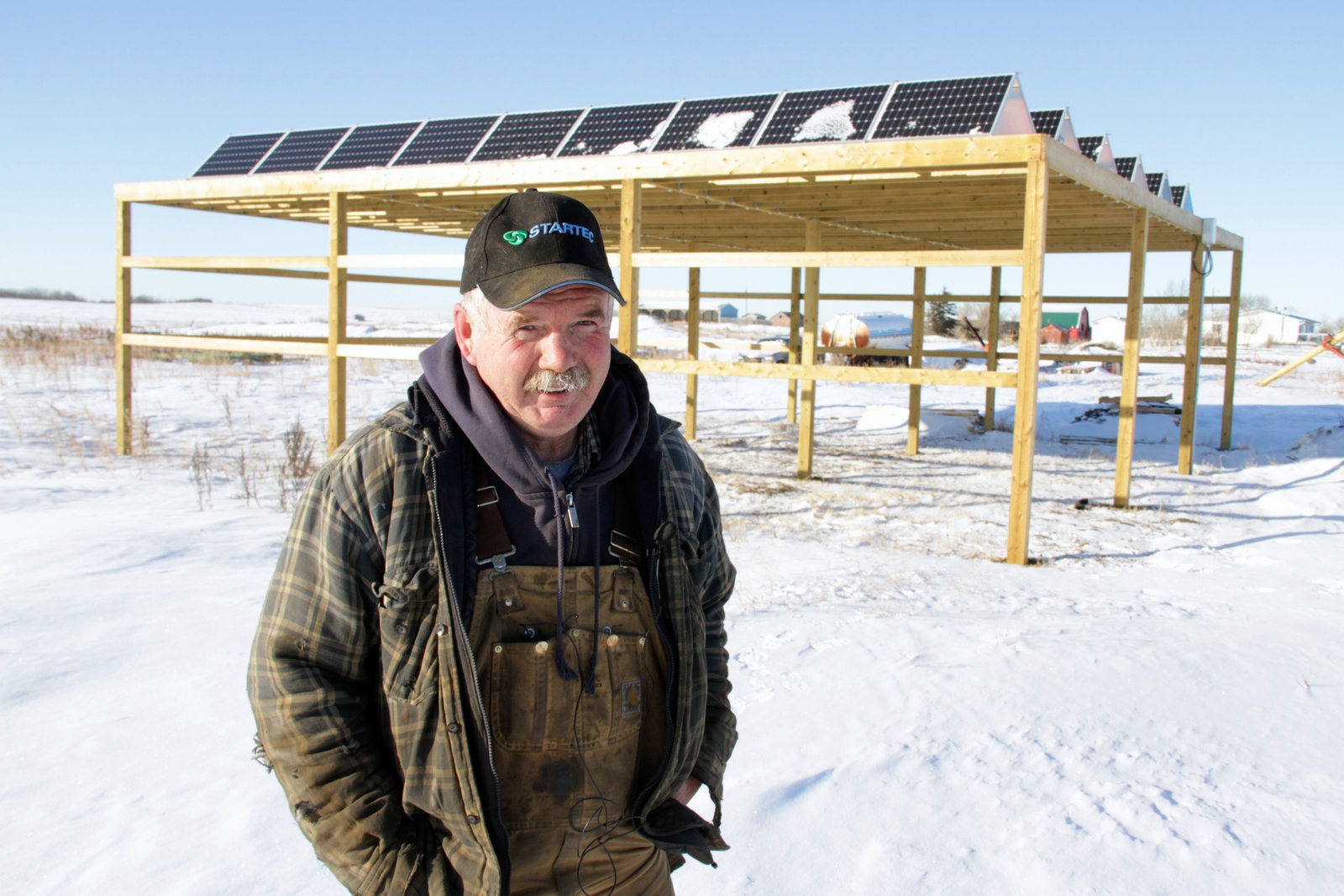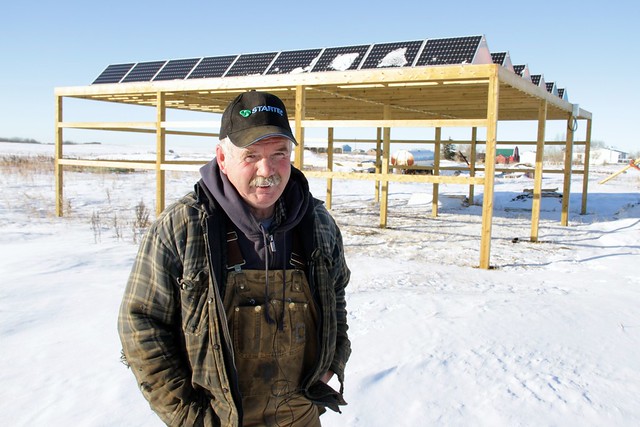By David Dodge and Duncan Kinney
“God hates cowards,” that’s how Bob Sargent, a farmer who also runs an oilfield services company and serves as a local councillor explains why he made his first investment in solar energy.
As part of an innovative new solar program he recently put a 10-kilowatt solar photovoltaic system on his property and is already looking to put up more.
“It’s cut my power back quite a bit. The economics are there plus it’s green. When I put this in we were only allowed ten [kilowatts], but now they’ve upped it and we can go higher than ten now,” says Sargent.
Sargent lives in Starland County a small, rural county north of Drumheller, Alberta. It’s dry and flat and home to about 2,000 people, mostly farmers. And Bob never would have installed his solar modules if it hadn’t been for the county. Matthew Kreke is a project manager for Starland County and according to him it all started with water.
“We wanted to bring rural water to most of our residents, that requires a lot of pumping and a lot of these pumping stations are very remote. So originally were trying to look at ways to cut costs with our energy for bringing water to our citizens. And that’s sort of how we stumbled onto solar. From there we’ve been involved with several different programs trying to bring solar out and we’ve seen the cost fall from there,” says Kreke.

Matthew Kreke, project manager with Starland County.
Water is heavy stuff and moving it around takes a lot of energy and money. All told the county runs 65 kilowatts worth of solar at various pumping stations and community buildings.
Inspired by their success with their own solar projects Starland County wanted to help its residents take advantage of this technology as well, so they developed the Starland County Solar Incentive working with the Municipal Climate Change Action Centre and Bullfrog Power. The goal was to install 100 kilowatts of solar with 10 different and they wanted to keep it affordable.
Through discussions with farmers Starland County found a tipping point. If they could bring the payback down from 20 plus years to 10 or 13 years they would have no trouble attracting people to the program. To bring the costs down they worked hard to develop a creative and affordable template for 10-kilowatt solar systems.
With the help of Bullfrog Builds (the program we also featured our other recent community solar episode) and the Municipal Climate Change Action Centre they were also able to offer a financial carrot, a grant of up to $5000. With farmers doing some of the installation themselves, plus tax incentives meant that they got the payback scenario down to 10 to 13 years and the cost down to about $30,000, even before the grant.
“Well some of these farmers out here have been out here a long time so when you talk about making an investment that will pay off in 10 years a lot of these are 100 year farm families out here. They are also groups that have lots of land, they’re comfortable putting together machinery, taking care of equipment and they also make large capital expenditures on an ongoing basis so a typical farmer in our county isn’t going to be scared away from a $30,000 purchase,” says Kreke.
When “Matthew [Kreke] got on board he was looking for a couple of farmers to be guinea pigs and to me it just sounded like it would work and I’m thinking ‘God hates cowards’ so here we are,” says Bob Sargent.
Sargent is pretty enthused, and already predicting better than planned performance. “Originally I thought roughly a ten-year payback, but I’m going to be less than eight years. But there is a 25 year warranty so in eight years I’ll get my money back plus I’ve still got 17 years left of warranty still on it,” says Sargent.
Sargent says he and his farmer brethren are comfortable thinking outside the box, looking for something new. And it’s hard to argue with him, this small county in the middle of the Prairies is a solar leader. They have pioneered an affordable template for farmers to add solar to their operation and benefit long term from solar energy for the next 25 years.


